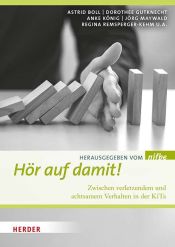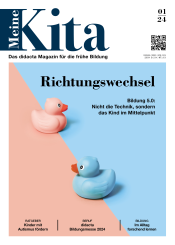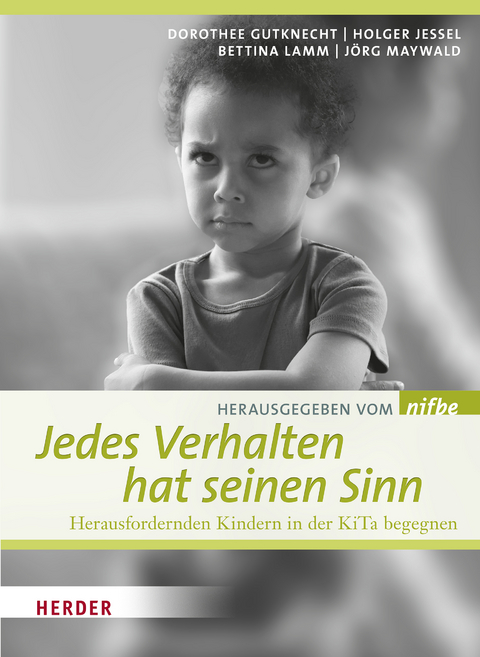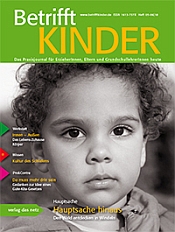Bindung und Begabungsentfaltung
Inhaltsverzeichnis
Seite 5 von 5
Literatur
- Ahnert, L. (2003). Frühe Kindheit: Bindungs- und Bildungsgrundlagen. In: Frühe Kindheit, Jg. 5, S. 8–12.
- Ahnert, L. (2007). Von der Mutter-Kind- zur Erzieherinnen-Kind-Bindung? In: F. Becker-Stoll/M. R. Textor (Hrsg.), Die Erzieherin-Kind-Beziehung. Zentrum von Bildung und Erziehung. 1. Aufl. Berlin: Cornelsen Scriptor, S. 31–41.
- Ahnert, L. (2008). Bindungsbeziehungen außerhalb der Familie: Tagesbetreuung und Erzieherinnen-Kind-Bindung. In: L. Ahnert (Hrsg.), Frühe Bindung. Entstehung und Entwicklung. 2. Auflage. München: Ernst Reinhardt Verlag, S. 256–277.
- Ahnert, L./Pinquart, M./Lamb, M. E. (2006). Security of children´s relationships with nonparental care providers: A meta-analysis. In: Child Development, Jg. 74, H. 3, S. 664–679.
- Ahnert, L./Rickert, H./Lamb, M. E. (2000). Shared caregiving: comparisons between home and child-care settings. In: Developmental Psychology, Jg. 36, S. 339–351.
- Ainsworth, M. D. S./Blehar, M. C./Waters, E./Wall, S. (1978). Patterns of attachment. A psychological study of strange situation. Hillsdale, New Jersey: Lawrence Erlbaum Associates, Publishers.
- Ainsworth, M. D. S./Wittig, B. (1969). Attachment and the exploratory behavior of one-year-olds in a strange situation. In: B. M. Foss (Hrsg.), Determinants of infant behavior. Band 4. London: Methuen, S. 113–136.
- Anderson, C. W./Nagle, R. J./Roberts, W. A./Smith, J. W. (1981). Attachment to substitute caregivers as a function of quality and caregiver involvement. In: Child Development, Jg. 52, S. 53–61.
- Arnett, J. (1989). Caregivers in Day-Care Centers: Does Training Matter? In: Journal of Applied Developmental Psychology, Jg. 10, S. 541–552.
- Barnas, M. V./Cummings, E. M. (1994). Caregiver stability and toddlers attachment-related behavior towards caregivers in day care. In: Infant Behavior and Development, Jg. 17, S. 141–147.
- Becker-Stoll, F. /Textor, M. R. (2007)(Hrsg.). Die Erzieherin-Kind-Beziehung. Zentrum von Bildung und Erziehung. Berlin u. a.: Cornelsen Scriptor.
- Bolten, M. (2009). Klinische Bindungsforschung. In: S. Schneider/J. Margraf (Hrsg.), Lehrbuch der Verhaltenstherapie. Band 3: Störungen im Kindes- und Jugendalter. Heidelberg: Springer Medizin Verlag Heidelberg, S. 55–76.
- Bowlby, J. (1969). Attachment and loss. Vol.1: Attachment. London: Hogarth. Bowlby, J. (1973). Attachement and loss. Vol. 2: Separation, anxiety and anger. London: Hogarth.
- Crittenden, P. M./Claussen, A. H./Kozlowska (2007). Choosing a valid assessment of attachment for clinical use: a comparative study. In: Australien and New Zealand Journal of Familiy Therapy, Jg. 28, H. 2, S. 78–87. Cummings, E. M. (1980): Caregiver stability and day care. In: Developmental Psychology, Jg. 16,H. 1, S. 31–37.
- Fox, N. (1977). Attachment of kibbutz infants to mother and metapelet. In: Child Development, Jg. 48, S. 1228–1239.
- Grossmann, K. E./Becker-Stoll, F./Grossmann, K./Kindler, H./Schieche, M./Spangler, G. et al. (1997). Die Bindungstheorie: Modell, entwicklungspsychologische Forschung und Ergebnisse. In: H. Keller (Hrsg.), Handbuch der Kleinkindforschung. 2., überarb. Aufl. Bern: Huber, S. 51–98.
- Hirsh-Pasek, K./Burchinal, M. R. (2006). Mother and caregiver sensitivity over time: predicting language and academic outcomes with variable- and person-centered approaches. In: Merrill-Palmer Quarterly, Jg. 52, H. 3, S. 449–485.
- Howes, C./Hamilton, C. E./Matheson, C. C. (1994). Children`s relationships with peers: differential associations with aspects of the teacher-child relationship. In: Child Development, Jg. 65, S. 253–263.
- Howes, C./Hamilton, C. E./Philipsen, L. C. (1998). Stability and continuity of child-caregiver and child-peer relationships. In: Child Development, Jg. 69, H. 2, S. 418–426.
- Laewen, H.-J./Andres B./Hedervari, E. (2003). Die ersten Tage – ein Modell zur Eingewöhnung in Krippe und Tagespflege. Weinheim: Beltz.
- Main, M./Solomom, J. (1986). Discovery of a new, insecure disorganized/disorientated attachment pattern. In: T. B. Brazelton/M. Yogman (Hrsg.), Affective development in infancy. Norwood, NJ: Ablex.
- NICHD Early Child Care Research Network (2003). Does amount of time spend in child care predict socioemotional adjustment during the transition to kindergarten? In: Child Development, Jg. 74, S. 976–1005.
- Oppenheim, D./Sagi, A./Lamb, M. E. (1988). Infant-adult attachments on the kibbutz and their relation to socioemotional development 4 years later. In: Developmental Psychology, Jg. 24, S. 427–433.
- Schaffer, H./Callender, M. (1959). Psychological effects of hospitalization in infancy. In: Paediatrics, Jg. 21, S. 528–539.
- Spitz, R. (1950). Anxiety in infancy. In: International Journal of Psychoanalysis, Jg. 31, S. 138–143.
- Watamura, S. E./Donzella, B./Alwin, J./Gunnar, M. R. (2003). Morning-to-afternoon increases in cortisol concentrations for infants and toddlers at child care: age differences and behavioral correlates. In: Child Development, Jg. 74, S. 1006–1020.
- Waters, E. (1995). Appendix A: The Attachment Q-Set (Version 3.0). In: Monographs of the Society for Research in Child Development, Jg. 60, H. 2/3, S. 234–246.
- Waters, E./Deane, K. E. (1985). Defining and assessing individual differences in attachment relationships: Q-methodology and the organization of behavior in infancy and early childhood. In: Monographs of the Society for Research in Child Development, Jg. 50, H. 1/2, S. 41–65.
- Wolff, M. de/van Ijzendoorn, M. H. (1997). Sensitivity and attachment: a meta-analysis on parental antecedents of infant attachment. In: Child Development, Jg. 68, H. 4, S. 571–591.
- Zulauf-Logoz, M. (2008). Die Desorganisation der frühen Bindung und ihre Konsequenzen. In: L. Ahnert (Hrsg.), Frühe Bindung. Entstehung und Entwicklung. 2. Aufl. München: Ernst Reinhardt Verlag. S. 297–312.
Hinweis:
Der Artikel wurde mit freundlicher Genehmigung des Herder-Verlags dem in der nifbe-Schriftenreihe erschienenen Buch "Bildung braucht Beziehung. Selbstkompetenz stärken - Begabungen entfalten. Freiburg: Herder (2011) entnommen.
- Zuletzt bearbeitet am: Samstag, 02. Februar 2013 11:46 by Karsten Herrmann





